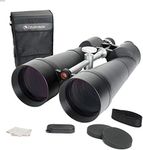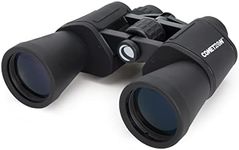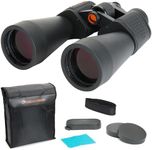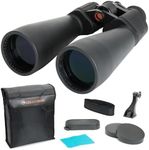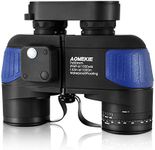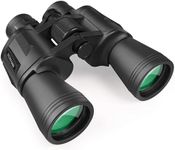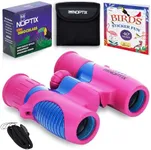Buying Guide for the Best Orion Astronomy Binoculars
Choosing the right pair of astronomy binoculars can greatly enhance your stargazing experience. Unlike telescopes, binoculars are more portable, easier to use, and provide a wider field of view, making them ideal for beginners and casual observers. When selecting binoculars for astronomy, there are several key specifications to consider to ensure you get the best fit for your needs. Understanding these specs will help you make an informed decision and enjoy the night sky to its fullest.MagnificationMagnification refers to how much closer the binoculars can make objects appear. For astronomy, a magnification of 7x to 10x is generally recommended. Higher magnifications can provide more detail but may also make the image shakier and harder to keep steady without a tripod. If you are a beginner or prefer handheld use, stick to the lower end of this range. If you plan to use a tripod, you can consider higher magnifications.
Objective Lens DiameterThe objective lens diameter, measured in millimeters, determines how much light the binoculars can gather. This is crucial for astronomy because more light means brighter and clearer images of celestial objects. Binoculars with an objective lens diameter of 50mm or more are ideal for stargazing. If you want a balance between portability and performance, 50mm is a good starting point. For more serious observation, consider lenses up to 70mm or even 80mm.
Field of ViewField of view (FOV) is the width of the area you can see through the binoculars, usually measured in degrees or feet at a specific distance. A wider FOV is beneficial for astronomy as it allows you to see more of the sky at once, making it easier to locate and track objects. Look for binoculars with a FOV of at least 5 degrees. If you enjoy scanning the sky and observing larger star clusters or constellations, a wider FOV will be more enjoyable.
Exit PupilThe exit pupil is the diameter of the beam of light that exits the eyepiece, calculated by dividing the objective lens diameter by the magnification. For astronomy, an exit pupil of 5mm to 7mm is ideal, as it matches the dilation of the human eye in low light conditions. This ensures that you are getting the maximum amount of light possible. If you are younger or have excellent night vision, aim for the higher end of this range.
Prism TypeBinoculars use prisms to correct the orientation of the image. The two main types are Porro prisms and roof prisms. Porro prisms are generally preferred for astronomy because they provide a wider field of view and better depth perception. They are also usually more affordable. Roof prisms are more compact and durable but can be more expensive. If you prioritize image quality and a wider view, go for Porro prisms. If you need something more compact and rugged, consider roof prisms.
CoatingsLens coatings improve light transmission and reduce reflections, resulting in brighter and clearer images. Fully multi-coated lenses are the best option for astronomy, as they provide the highest level of light transmission. If you are serious about stargazing, look for binoculars with fully multi-coated optics. If you are a casual observer, multi-coated or fully coated lenses can still provide good performance.
Weight and ErgonomicsThe weight and ergonomics of the binoculars affect how comfortable they are to use, especially for extended periods. Heavier binoculars can be tiring to hold, so consider how you plan to use them. If you will be using a tripod, weight is less of an issue. For handheld use, look for binoculars that are lightweight and have a comfortable grip. Adjustable eyecups and a central focus wheel can also enhance comfort and ease of use.

